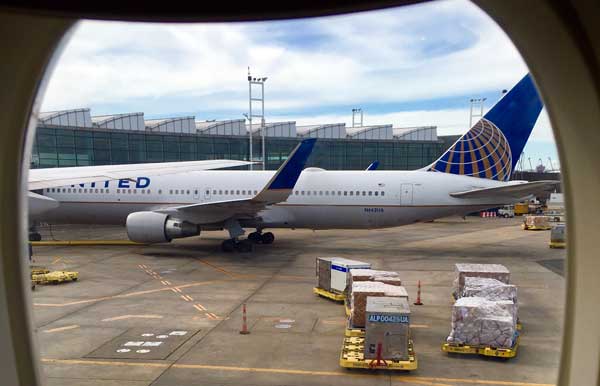2016 marks the 50th anniversary of a short lived innovation in domestic air travel which introduced millions of young people to flying-– the 50% youth standby fare. Jets had almost fully replaced piston planes. Routes and fares were still controlled by the now defunct Civil Aeronautics Board. Fares were so simple that if one picked up an airport specific timetable for a hometown city, it actually showed the prices.

Compare that to multiple “buckets” of different prices published by the carriers today, which change daily. Those under age 22 could purchase a paper identify card by showing a driver’s license which entitled them to standby for any domestic flight. Back then, with load factors rarely averaging above 60%, a standby ticket was a relatively sure thing, especially if one avoided Fridays and late Sunday. Even better in those days of no Saturday night stay over or advance purchase requirements, you could make a last minute trip for very little.
The St. Louis Post Dispatch reported on Sunday January 30, 1966 that St. Louis University student Paul Power Jr. was the first to use this fare and pictured him on the stairs by the front door of an American Airlines “Astrojet” at Lambert Field the previous Thursday. (There were no jetways then).
The standby ticket came with risks before today’s hub and spoke system in that many flights started at one coast and made multiple hops and a standby passenger could be kicked off midway. This happened to me once when I was stuck in Columbus for half a day on my way home. I, like many others, used this discount to fly to college. I also used it to travel to the 1968 political conventions in Miami and Chicago.
The flying public before the mid-sixties may not have been the 1%, but it was probably the 10%. Passengers traveled in suits and were fed hot food even in coach. Getting a meal on a standby flight oftentimes beat dorm food. However, these new customers were different from the regular flying crowd. There were complaints from parents whose children were stranded midway and airport operators whose gates areas were flooded with young people waiting for flights. Existing passengers didn’t like the fact that if coach was full, a standby passenger was put in first class, which happened to me once. Others complained that some of the new customers were badly dressed and hadn’t bathed. Some students made multiple phony reservations, which could be done by telephone without prepayment for imaginary passengers who wouldn’t show up-thus providing a seat for standbys. Others demanded to be served liquor.
In 1969 the CAB proposed the end of the program because it discriminated against older passengers but that didn’t stand. The program drifted away in the early 70’s, but by then many young people were hooked.
About the Author: Norman W. Pressman is a frequent traveler and St. Louis lawyer who has argued before the United States and Missouri Supreme Courts.



